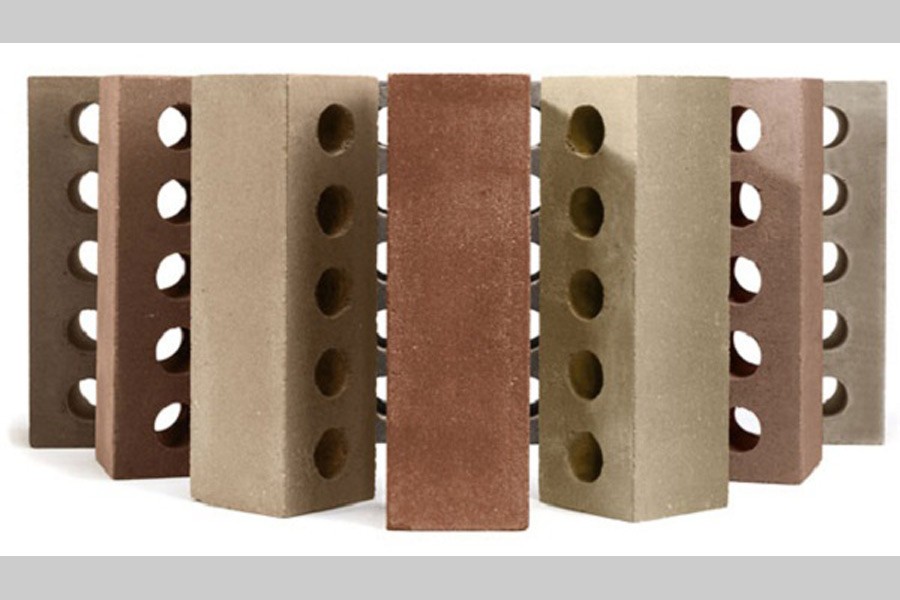For quite sometime, conventional brick making is held responsible for a host of accompanying perils. It is not just the environmentalists who are raising their voice against unabated expansion of brick fields across the country, but common people too, courtesy of the media, are becoming increasingly concerned about the ruinous effects.
There is no disputing that amidst the many hazards affecting the environment, brick making is one that not only adversely affects the ecosystem but more damagingly leaves a harmful impact on livelihood means of the masses, including among others cultivation. This is particularly so when it comes to conventional brick making practised in the country for ages.
Reports in the newspapers and concern voiced by environmentalists have, in effect, done very little to rein in the menacing trend of brick making all over the country. However, it must not be denied that the government's enactment of the brick making law few years ago may have been largely prompted by these reports and worries raised by social and environmental activists. With the law in place, it looked like things were set to change for the better. This has not happened.
Sprouting of brick kilns irrespective of locations has been on the rise for decades, facilitated largely by the absence of any enforceable rules. This is not to say there was no law governing brick making. The Brick Burning (control) Act 1989 had its inadequacies to dictate terms in the first place, and besides, lacuna in the enforcement of some of the compliance issues made things worse. Resultantly, the practice of setting up brick plants at any location of choice went unopposed.
The law currently in force apparently addresses the core issues associated with brick making-- chiefly meant to check widespread environment pollution as well as save arable land and forest. The law Brick Making and Brickfield Establishment (Control) Act 2013 introduced tougher regulations for brick production, including provision of trial for offences under the penal code. The stipulations envisaged in the law apply to all brick kilns in the country. The law prohibits establishment of brick kilns in residential, protected, commercial and agricultural locations, and also in forests, sanctuaries, wetlands and ecologically critical areas. It has introduced tougher regulations for brick production, including provision of trial for offences under the penal code.
According to the Department of Environment, there are about 6,356 brickfields in the country. However, environmentalists claim the number to be as high as around 10,000, and half of them are located around the capital. According to a UNDP estimate, Bangladesh produces some 8.66 billion bricks a year at a value of $450 million -- almost 1.0 per cent of the country's GDP. Despite the sizeable contribution of brick making to the economy, one of the grim realities is that brick fields all over the country are getting increasingly invasive in grabbing the country's less than sufficient arable lands. More dangerous is the threat that comes in terms of affecting neighbourhood lands under cultivation because of the heat, caustic smoke and dust generated by the brick making plants. A local daily reports that over 6.4 million tonnes of carbon emissions are caused by the brick kilns annually.
Concerned quarters are of the opinion that the much awaited law, despite strong penal provisions, has not been able to contain the havoc as yet. There are incidents of outright flouting of the law as brickfield owners are still following their conventional practice of brick making-- that too in locations prohibited by law. Besides, there is no noticeable move to remove brick fields from close proximity of cultivable lands. Reasons for violation of the law is attributed by many to lack of enforcement in general and on the application of the law in specific situations where brick kilns are found visibly disruptive to ecology and croplands.
Experts, however, opine that alongside the law taking its course, there is a need to introduce modern green technology capable of taking care of the pollution aspect to a great extent. It has been learnt that the popular and widely accepted technology in this regard is smokeless, energy efficient Hybrid Hoffman Kiln (HHF). HHF brick kilns can burn most of the fuel used during firing. This also results in less energy use and a considerable cut on production costs. The most notable aspect of the technology is that it dries the bricks by directing hot air into the tunnel from the kiln, which blocks carbon emissions.
In view of the wide acceptance of the technology in advanced countries chiefly because of its emission-preventing device, Bangladesh should have opted for it long back. The cost of the technology is reportedly high. But keeping in view its efficiency, cost-effectiveness, high scale of production and above all emission-free mechanism, it is highly imperative that the government gradually phased out the traditional kilns and provided necessary support by way of soft-term financing to encourage the green technology.


